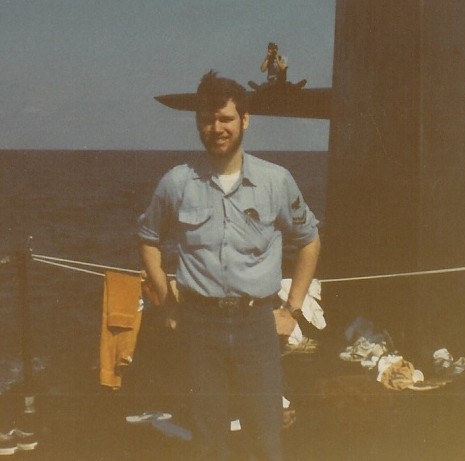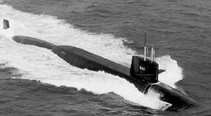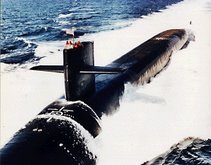Monday, May 29, 2006
Memorial Day 2006 - Remembering Submariners
According to the Department of Veteran Affairs we are losing our WWII veterans at a rate of over 1,000 a day. As with every generation that is tested by conflict the men and women of that generation have much to pass along to those who follow. Today in parades and ceremonies throughout this country these walking pages of history demonstrate a sense of honor, duty and commitment by remembering their follow shipmates and comrades who made the ultimate sacrifice. A sacrifice made in defense of the ideas and principles embodied by their country, The United States Of America.
This Memorial Day may be one of the last in which the U.S Submarine Force has any surviving Congressional Metal of Honor recipients, the remaining hero being Rear Admiral Eugene Bennett Fluckey who is currently struggling with a prolonged illness. The following are the recipients of the Congressional Metal of Honor while serving in the U.S Submarine Service.
WWI – Congressional Metal of Honor recipient
Torpedoman Second Class Henry Breault
WWII - Congressional Metal of Honor recipients
Captain John Cromwell (awarded posthumously)
Commander Sam Dealey (awarded posthumously)
Commander Eugene Fluckey
Commander Howard Gilmore (awarded posthumously)
Commander Richard O'Kane
Commander Lawson P. Ramage
Commander George Street
The above recipients of the Congressional Medal of Honor are representative of the submariner’s heroism and sacrifice. We can document the sacrifice in sheer numbers of boats and men lost, but by the nature of submarine operations we can only speculate on their heroism, much of which is lost in the great ocean depths.
If you wish to get a sense of the commitment the U.S Submarine Force has shown in it’s 100 plus year history I recommend visiting the “On Eternal Patrol” website and browse through the both peacetime and wartime listings of both Lost Boats and Crews.
Much is owed to this a small segment of the military and Navy who remain on eternal patrol.
This Memorial Day may be one of the last in which the U.S Submarine Force has any surviving Congressional Metal of Honor recipients, the remaining hero being Rear Admiral Eugene Bennett Fluckey who is currently struggling with a prolonged illness. The following are the recipients of the Congressional Metal of Honor while serving in the U.S Submarine Service.
WWI – Congressional Metal of Honor recipient
Torpedoman Second Class Henry Breault
WWII - Congressional Metal of Honor recipients
Captain John Cromwell (awarded posthumously)
Commander Sam Dealey (awarded posthumously)
Commander Eugene Fluckey
Commander Howard Gilmore (awarded posthumously)
Commander Richard O'Kane
Commander Lawson P. Ramage
Commander George Street
The above recipients of the Congressional Medal of Honor are representative of the submariner’s heroism and sacrifice. We can document the sacrifice in sheer numbers of boats and men lost, but by the nature of submarine operations we can only speculate on their heroism, much of which is lost in the great ocean depths.
If you wish to get a sense of the commitment the U.S Submarine Force has shown in it’s 100 plus year history I recommend visiting the “On Eternal Patrol” website and browse through the both peacetime and wartime listings of both Lost Boats and Crews.
Much is owed to this a small segment of the military and Navy who remain on eternal patrol.
Monday, May 22, 2006
A Little Blog Maintenance
If anyone really noticed I pulled the last post due to the overhead it took to load. I have a fast broadband connection and it took a painfully long time to load at times. It was a cool wave effect you could add to a picture but not worth the load time.
Updated my links to include The Cook Shack to my submariners blogroll.
Updated my link to Chaotic Synpatic Activity to his new site.
On a personal note I started a new job two weeks ago that requires me to travel a bit. I anticipate my blog and news reading to go down and subsequently posting will probably be about once a week at best. Maybe I can make put more effort into the weekly posts than my recent fascination with web video content.
Best - LL
Sunday, May 21, 2006
Polaris Program - Book Find
A couple of months back my wife after visiting her parents came home with a book her mother thought I would enjoy. The book is titled "Adventure in Partnership The Story of Polaris" and had a limited distribution when produced in the mid 1960s.
The book came from her grandfather "Pa" who worked for Electric Boat in Groton back in the 60s as a QA engineer. I helped clean out Pa's basement in Stonington, CT just before he passed away at age 92 about a year ago. His basement resembled a museum to machining. I wished I talked with him more about his career before he left us.
I thought the book contained many interesting photos inside, below is a letter I found inside and a tiny sample of the 250+ Polaris program photos.

Department of the Navy Letter I found in Pa's book.

Commander and Chief at the time enjoying himself

SSBN SINS ally - Brings back memories for this former NavET

Torpedomen hard at work - so that's why they call it a Torpedo Skid.
This was for Pa, you may not be here to read this, but thanks for your years of hard work that helped make me safe when I rode SSBNs. -LL
The book came from her grandfather "Pa" who worked for Electric Boat in Groton back in the 60s as a QA engineer. I helped clean out Pa's basement in Stonington, CT just before he passed away at age 92 about a year ago. His basement resembled a museum to machining. I wished I talked with him more about his career before he left us.
I thought the book contained many interesting photos inside, below is a letter I found inside and a tiny sample of the 250+ Polaris program photos.

Department of the Navy Letter I found in Pa's book.

Commander and Chief at the time enjoying himself

SSBN SINS ally - Brings back memories for this former NavET

Torpedomen hard at work - so that's why they call it a Torpedo Skid.
This was for Pa, you may not be here to read this, but thanks for your years of hard work that helped make me safe when I rode SSBNs. -LL
Saturday, May 13, 2006
The Evil Empire - Redux
This one is for my friend Ken heading to the 43rd International Submariners Convention starting in Moscow May 22 and ending in St Petersburg May 28.
Be safe comrade...
Be safe comrade...
Wednesday, May 10, 2006
It's a MAD MAD Mullah's World
I'm stealing the visual commentary idea from WillyShake at Unconsidered Trifles.
Would you trust the theocratic rulers of Iran with nuclear technology and potentially nuclear weapons?
I wouldn't, no matter how catchy a tune they play for the world!
Would you trust the theocratic rulers of Iran with nuclear technology and potentially nuclear weapons?
I wouldn't, no matter how catchy a tune they play for the world!
Monday, May 08, 2006
Video - Bunch of Boomer Yo Yos
Bothenook asked a question recently over at his blog "how did you keep your sanity underway?". In comments I said I enjoyed reading novels, others had different ways of dealing with the boredom of a long patrol.
Apparently if you're on the USS Maine (SSBN-741) patrols can make you go a little yoyo.
Apparently if you're on the USS Maine (SSBN-741) patrols can make you go a little yoyo.
Sunday, May 07, 2006
Iran’s Strait of Hormuz Submarine Strategy
This week U.S. continues to try to corner Iran at the UN on its nuclear ambitions. Diplomatic maneuvers in the UN may bring about a resolution imposing sanctions and opening the option of military action. At issue is Iran’s continued defiance to end uranium enrichment a key step in acquiring the ability to produce nuclear weapons.
On April 11 Iranian leaders celebrated their successes in uranium enrichment with a ceremony that was oddly reminiscent cold war megalomaniac states antics, video link here. They even produced a soviet style propaganda film on April 12th touting the state’s nuclear projects, video link here.
Then on April 17 Iranian Army Chief of Joint Staff General Abdorrahim Musavi claimed the following on Iranian TV: "We make our submarines ourselves, and we make them in a way that will serve us in battle with the enemy... with America. In other words, these vessels are not the kind about which the other side gets information even before us. We work on equipment that is locally made, and which is compatible with our own tactics and training.” Memri.org video link here and found on YouTube below:
Indeed Austin Bay speculates on his blog that Iran’s main strategy, if U.S. military action should occur, is to shut down the strategic choke point Strait of Hormuz to shipping. Austin Bay questions possible tactic of an Iranian “submarine bastion” below:
A large torpedo hit below the waterline is a big threat. The US Navy has devoted a lot of thought and training time to countering Iran’s diesel submarines, including submarines operating from “submarine bastions.” A US Navy reader might send me an “official definition” of a sub bastion, but here’s my on-the-fly description. A sub bastion is an undersea area surrounded by mines and sensors, usually located in coastal waters. The sub hides inside the “bastion” — waiting to take a shot (with torpedoes or anti-ship missiles) at ships approaching the bastion or attempting to sweep the mines. A bastion-builder like Iran could site anti- aircraft missiles on land to protect the bastion from anti-submarine warfare aircraft. Yes– a sub inside a bastion is operating in a restricted space, but the sub is “quiet and floating” –making it more difficult to detect. The bastion-builder might even have a few “decoy” subs in the bastion — electronic devices or even ballasted metal tanks that fake a submarine’s operating signatures. The odds are very good that US Navy or Royal Navy anti-submarine hunters will eventually find and kill the sub inside the bastion; but the bastion defense makes the hunt riskier and potentially expensive. Sinking a US Navy capital ship gives Iran a propaganda victory. A slick diesel sub commander operating in a coastal bastion will undoubtedly have several “paths of retreat” to a cove or harbor. The gambit here would be to frustrate coalition sub hunters as long as possible, draw them into the bastion’s minefields, draw surface craft into an anti-ship missile ambush (or aircraft into a SAM ambush) then pull out and live to fight another day.
Just threatening to close the Straits spikes oil prices and raises marine insurance rates — which are diplomatic victories of a sort for Tehran’s mullahs.
When interviewed recently one W. Patrick Lang, formerly the chief Middle East analyst at the Defense Intelligence Agency remarked of possible Iranian attempt to shut down the Strait of Hormuz “Iran might surprise the U.S. by sinking a tanker in the gulf or something and then the U.S. Navy would beat the bejesus out of them, but they could cause a spike in oil prices for a month or two”.
Conventional wisdom appears to be that in a hot conflict the Iranian submarine strategy of area denial would be a shot term propaganda victory at best but more likely a series of failed martyrdom operations. Surface and subsurface ASW operations could be difficult in the short term but given the operational constraints of Iran’s conventional submarines (endurance and range) time and technology would be in the U.S. Navy’s favor.
On April 11 Iranian leaders celebrated their successes in uranium enrichment with a ceremony that was oddly reminiscent cold war megalomaniac states antics, video link here. They even produced a soviet style propaganda film on April 12th touting the state’s nuclear projects, video link here.
Then on April 17 Iranian Army Chief of Joint Staff General Abdorrahim Musavi claimed the following on Iranian TV: "We make our submarines ourselves, and we make them in a way that will serve us in battle with the enemy... with America. In other words, these vessels are not the kind about which the other side gets information even before us. We work on equipment that is locally made, and which is compatible with our own tactics and training.” Memri.org video link here and found on YouTube below:
Indeed Austin Bay speculates on his blog that Iran’s main strategy, if U.S. military action should occur, is to shut down the strategic choke point Strait of Hormuz to shipping. Austin Bay questions possible tactic of an Iranian “submarine bastion” below:
A large torpedo hit below the waterline is a big threat. The US Navy has devoted a lot of thought and training time to countering Iran’s diesel submarines, including submarines operating from “submarine bastions.” A US Navy reader might send me an “official definition” of a sub bastion, but here’s my on-the-fly description. A sub bastion is an undersea area surrounded by mines and sensors, usually located in coastal waters. The sub hides inside the “bastion” — waiting to take a shot (with torpedoes or anti-ship missiles) at ships approaching the bastion or attempting to sweep the mines. A bastion-builder like Iran could site anti- aircraft missiles on land to protect the bastion from anti-submarine warfare aircraft. Yes– a sub inside a bastion is operating in a restricted space, but the sub is “quiet and floating” –making it more difficult to detect. The bastion-builder might even have a few “decoy” subs in the bastion — electronic devices or even ballasted metal tanks that fake a submarine’s operating signatures. The odds are very good that US Navy or Royal Navy anti-submarine hunters will eventually find and kill the sub inside the bastion; but the bastion defense makes the hunt riskier and potentially expensive. Sinking a US Navy capital ship gives Iran a propaganda victory. A slick diesel sub commander operating in a coastal bastion will undoubtedly have several “paths of retreat” to a cove or harbor. The gambit here would be to frustrate coalition sub hunters as long as possible, draw them into the bastion’s minefields, draw surface craft into an anti-ship missile ambush (or aircraft into a SAM ambush) then pull out and live to fight another day.
Just threatening to close the Straits spikes oil prices and raises marine insurance rates — which are diplomatic victories of a sort for Tehran’s mullahs.
When interviewed recently one W. Patrick Lang, formerly the chief Middle East analyst at the Defense Intelligence Agency remarked of possible Iranian attempt to shut down the Strait of Hormuz “Iran might surprise the U.S. by sinking a tanker in the gulf or something and then the U.S. Navy would beat the bejesus out of them, but they could cause a spike in oil prices for a month or two”.
Conventional wisdom appears to be that in a hot conflict the Iranian submarine strategy of area denial would be a shot term propaganda victory at best but more likely a series of failed martyrdom operations. Surface and subsurface ASW operations could be difficult in the short term but given the operational constraints of Iran’s conventional submarines (endurance and range) time and technology would be in the U.S. Navy’s favor.
Saturday, May 06, 2006
Urine the Navy Now or Not
I start a new job on Monday and went for an employer drug screening last week. No big deal, but it brought back memories of random drug tests in the Navy. I must have filled a 55 gallon drum with piss during my service. OK maybe closer to 5 gallons but we were still tested a lot back in the 1980’s, at least once a month when not on patrol and sometimes even then if patrol included a rare liberty port call.
The random testing usually went like this. Show up for muster one morning and everyone whose service number ended with some "“randomly selected"” set of numbers would be tested, both Officer and Enlisted. Although, sometimes random meant the whole crew was tested. The ship's Corpsman, some poor JO and an unlucky Chief would get the pee watch. If you were to be tested, but didn'’t have to go, you drank water until you did. Then in a carefully orchestrated dance of paperwork and head calls the deed was done. List your over the counter meds, sample signed and witnessed and off to the lab it went.
Some sailors complained that the tests were inaccurate and you could get "popped on the piss test" by a false positive. I remember lots of rumors like don't eat poppy seed muffins, take certain over the counter meds or attend music venues where you can'’t see the stage due to the smoke. But in reality you were safe if you didn'’t do drugs.
Getting busted meant Captain'’s Mast, loss of at least one pay grade, forfeiture of some remaining pay and of course banned from submarine duty. It was off to skimmer world for the pot head, usually with someone commenting, "“Seaman Jones will be peeling potatoes on an oiler out of Adak in two weeks"”. A second offence on skimmers meant a dishonorable discharge and you could never get a security clearance, work for a defense contractor or the federal government. Although, sometimes the dishonorable could revert to a general discharge if the offending sailor had an otherwise clean record.
I saw some mediocre sailors go the way of urinalysis positives and some good sailors as well. But I could never understand why after working through sub school, pipeline schools, making rate and qualifying in submarines, someone could be so stupid. Literally they pissed all that work away, it made no sense. Maybe it was a cultural leftover from that whole me generation peace love hippy drug culture thing that happened in the late 60s early 70’s I don'’t know.
On the positive side, during my service in the Navy I saw a steady decline in people coming up positive on the urinalysis to the point where it seemed extremely rare. That trend of declining use continued for 20 years from 1981 when testing started until about 2000 when drug use detected through testing started to again increase. I couldn'’t find any recent data so I don'’t know if any increased testing stopped or reversed the increases in drug use reported between 2000 and 2002. I also don't know if the stats were different for the submarine community, I think we were one of the first to be tested routinely.
Marijuana was the problem in 1980s but from the list of news on this site Ecstasy seems to be the big concern today.
Some people say it'’s somewhat degrading to submit to a drug urinalysis test, but so is taking off your shoes and opening your bags for the passenger screening of a commercial flight. After all we all can'’t be privileged U.S. Congressmen.
The random testing usually went like this. Show up for muster one morning and everyone whose service number ended with some "“randomly selected"” set of numbers would be tested, both Officer and Enlisted. Although, sometimes random meant the whole crew was tested. The ship's Corpsman, some poor JO and an unlucky Chief would get the pee watch. If you were to be tested, but didn'’t have to go, you drank water until you did. Then in a carefully orchestrated dance of paperwork and head calls the deed was done. List your over the counter meds, sample signed and witnessed and off to the lab it went.
Some sailors complained that the tests were inaccurate and you could get "popped on the piss test" by a false positive. I remember lots of rumors like don't eat poppy seed muffins, take certain over the counter meds or attend music venues where you can'’t see the stage due to the smoke. But in reality you were safe if you didn'’t do drugs.
Getting busted meant Captain'’s Mast, loss of at least one pay grade, forfeiture of some remaining pay and of course banned from submarine duty. It was off to skimmer world for the pot head, usually with someone commenting, "“Seaman Jones will be peeling potatoes on an oiler out of Adak in two weeks"”. A second offence on skimmers meant a dishonorable discharge and you could never get a security clearance, work for a defense contractor or the federal government. Although, sometimes the dishonorable could revert to a general discharge if the offending sailor had an otherwise clean record.
I saw some mediocre sailors go the way of urinalysis positives and some good sailors as well. But I could never understand why after working through sub school, pipeline schools, making rate and qualifying in submarines, someone could be so stupid. Literally they pissed all that work away, it made no sense. Maybe it was a cultural leftover from that whole me generation peace love hippy drug culture thing that happened in the late 60s early 70’s I don'’t know.
On the positive side, during my service in the Navy I saw a steady decline in people coming up positive on the urinalysis to the point where it seemed extremely rare. That trend of declining use continued for 20 years from 1981 when testing started until about 2000 when drug use detected through testing started to again increase. I couldn'’t find any recent data so I don'’t know if any increased testing stopped or reversed the increases in drug use reported between 2000 and 2002. I also don't know if the stats were different for the submarine community, I think we were one of the first to be tested routinely.
Marijuana was the problem in 1980s but from the list of news on this site Ecstasy seems to be the big concern today.
Some people say it'’s somewhat degrading to submit to a drug urinalysis test, but so is taking off your shoes and opening your bags for the passenger screening of a commercial flight. After all we all can'’t be privileged U.S. Congressmen.
Subscribe to:
Comments (Atom)








